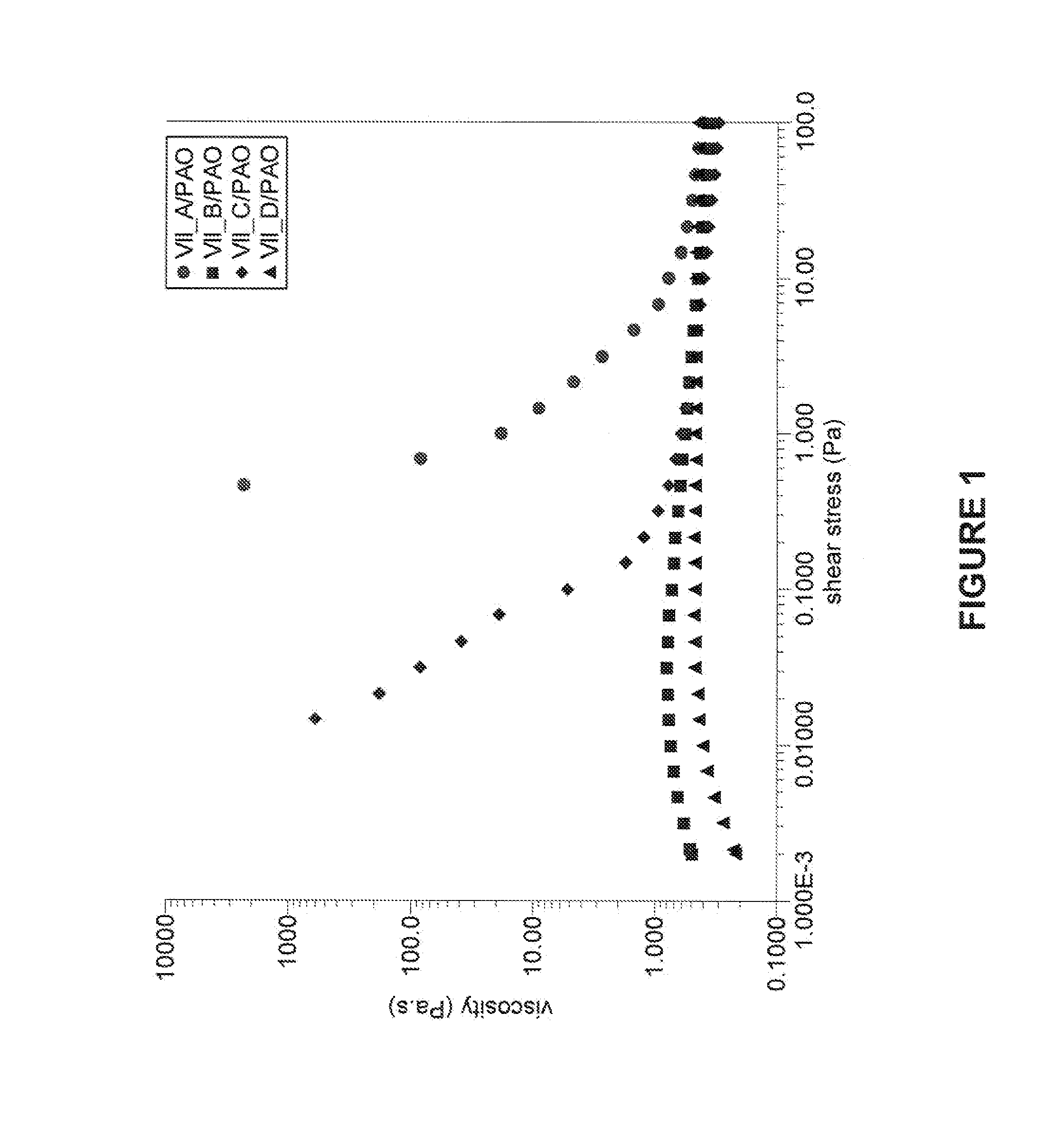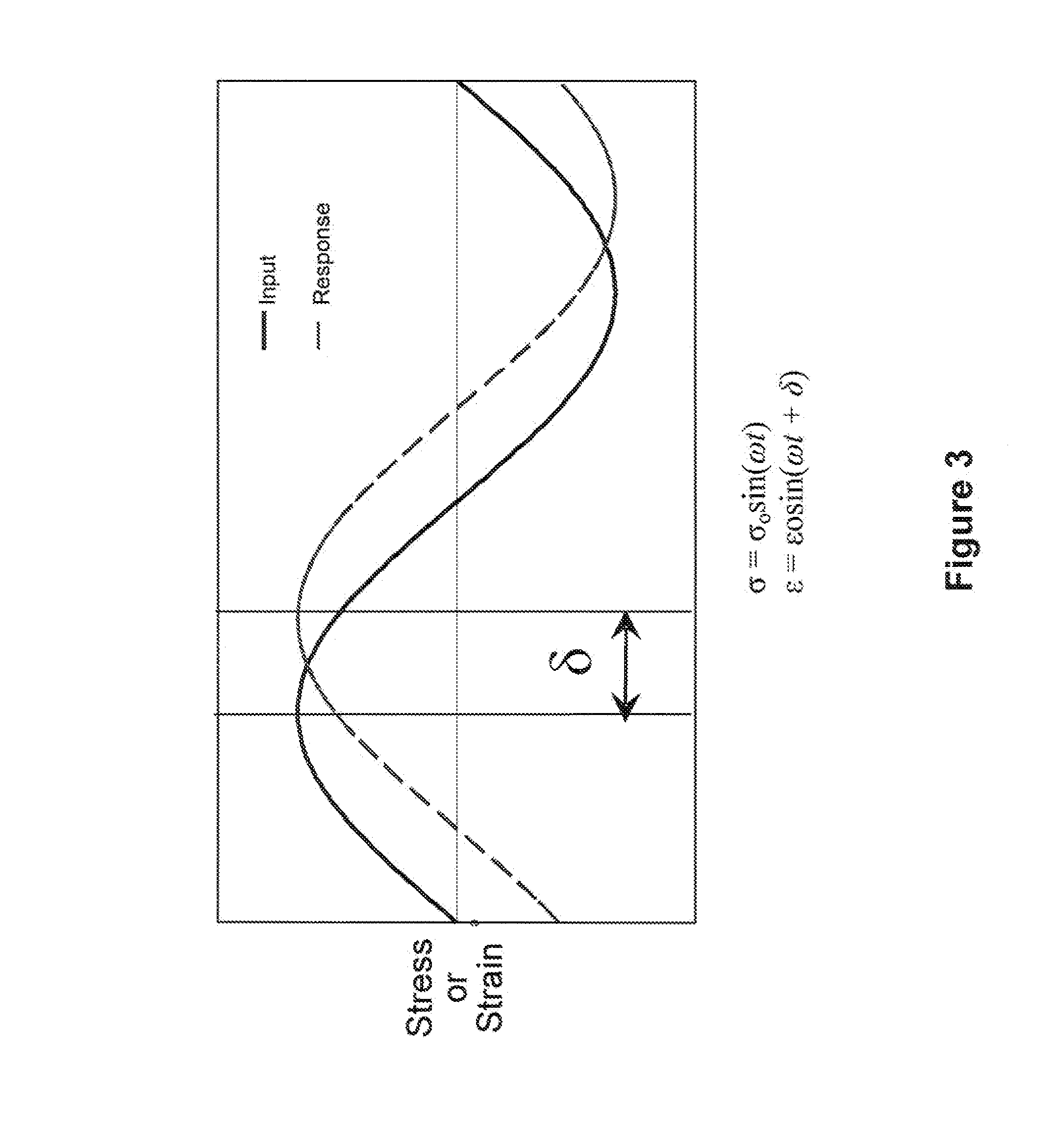Rheological methods to determine the predisposition of a polymer to form network or gel
a polymer and gel technology, applied in chemical methods analysis, instruments, fuels, etc., can solve the problems of polymer network formation, increase boundary friction, reduce lubricating properties and wear protection,
- Summary
- Abstract
- Description
- Claims
- Application Information
AI Technical Summary
Benefits of technology
Problems solved by technology
Method used
Image
Examples
Embodiment Construction
[0022]The present disclosure provides improved rheological method(s) to characterize polymer interactions leading to gel formation in diluents, oils, and in particular lubricating oils using Steady State Flow Rheology or Oscillatory Rheology. The rheological methods according to the present disclosure can be used to design polymer having optimized properties as Viscosity Index Improvers in lubricating oils.
[0023]The methods of the present disclosure are especially useful in evaluating copolymers of alpha-olefins, such as ethylene-propylene copolymers, and compositions thereof. For example, the methods of the disclosure can be used to evaluate polymer compositions comprising two types of ethylene copolymer. The polymer composition can have a first ethylene copolymer having relatively lower ethylene content (compared to the second ethylene copolymer) and which is a copolymer of ethylene, an alpha-olefin comonomer, and optionally an internal olefin and optionally a polyene, such as a d...
PUM
| Property | Measurement | Unit |
|---|---|---|
| Temperature | aaaaa | aaaaa |
| yield stress | aaaaa | aaaaa |
| temperature | aaaaa | aaaaa |
Abstract
Description
Claims
Application Information
 Login to View More
Login to View More - R&D
- Intellectual Property
- Life Sciences
- Materials
- Tech Scout
- Unparalleled Data Quality
- Higher Quality Content
- 60% Fewer Hallucinations
Browse by: Latest US Patents, China's latest patents, Technical Efficacy Thesaurus, Application Domain, Technology Topic, Popular Technical Reports.
© 2025 PatSnap. All rights reserved.Legal|Privacy policy|Modern Slavery Act Transparency Statement|Sitemap|About US| Contact US: help@patsnap.com



